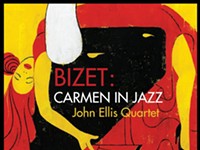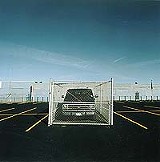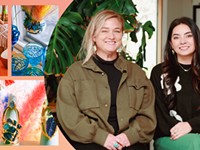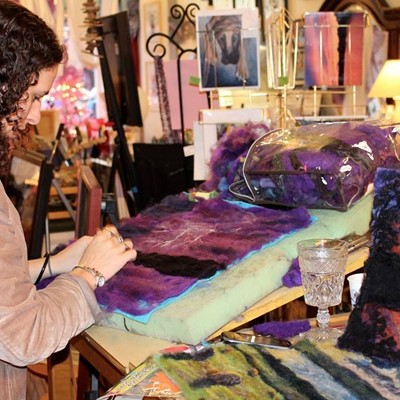[
{
"name": "500x250 Ad",
"insertPoint": "5",
"component": "15667920",
"parentWrapperClass": "",
"requiredCountToDisplay": "1"
}
]
American Sublime, a recent exhibition at the Pennsylvania Academy of Fine Arts in Philadelphia, surveyed the paintings of 19th-century landscape masters Frederic Edwin Church, Thomas Cole, and others. The show explored the traditional view of the sublime landscape in all its transcendent glory.
That was then; this is now.
Scott Laird, gallery director at Visual Studies Workshop, sees a new notion of the sublime nudging out the old. Unlike the open vistas of the 19th century, the 21st-century landscape has been indelibly transformed by humans. Asphalt has paved much of the ground in cities; electric lights often replace the sun and moon in our view of the world.
Are You Alone..., the first VSW show curated by Laird, is an excellent survey of contemporary artists' notions of the landscape. No humans are present in these images, but their presence is a large component of each piece.
The most striking common denominator here is the use of parking lots as subject matter. Half of the artists claim these barren man-made landscapes as fitting subject matter.
Ilan Jacobsohn's Rest Stop provides a fascinating contrast to the landscapes of the past. There's not a single natural element visible. The color photograph is an entirely geometric composition in which the horizontal lines of parking spaces and rows of windows in a background motel are broken only by a curving wall. Jacobsohn's Rooftop Parking Lot is even more minimal in its horizontal composition, but in this case treetops and blades of grass introduce traces of nature.
Rochester, by Keith Johnson, also portrays a parking lot but, in this case, there is a subtext of freedom vs. imprisonment. In the center of the lot is a cage just big enough to fit the truck that it holds. Although its function is obviously to keep the truck safe, the manner in which it is photographed makes it look like the truck is in quarantine.
In Jim Dingilian's Watching,a single light illuminates a parking lot. But in Dingilian's works the actual subjects are not as important as what they are transformed into. Works like Watching appear to be sepia-toned photographs but they are actually pencil drawings on old school-desk and chair parts. So they take on a poetic, Tonalist quality. Despite the lack of romance in its title, Dingilian's Drainage Ditch is the most beautiful piece in the show.
The romance --- and a sense of foreboding --- continues in more unlikely places. Football Field, by Jacobsohn, has the same sort of intense silhouette of trees against backlight we would expect in a Blakelock painting. But there is no sunset here; the light is man-made illumination from an athletic field.
There are also plenty of barren landscapes. Susan Lynn Smith's color photograph, Linda's House, Rockbridge County, VA, depicts a doorframe and open screen door with no house attached. There may be a story behind this --- a burned down house, perhaps --- but, in this context, the image contains all the surreal qualities of a Magritte painting.
Paul Cunningham's photographs also contain elements of the surreal. A color image from England, Untitled 7 depicts a landscape that could be the end of the earth. Cars are parked near a cliff abruptly cutting short the landscape. Nearby, another print from this series shows the top of a red ladder that, for all the viewer knows, leads to an undefined abyss.
The most unusual piece in the show can be found in a dark area in the far corner of the gallery. Rick S. Hill's untitled work is a mixed-media installation that will not let you forget the title of the show. If you have fears of walking alone through the urban landscape late at night, this piece is guaranteed not to make you feel any better about it.
Hill has recreated strange little vignettes, the kinds of things you might glimpse out of the corner of your eye as you hurry past to find your car: an oil slick on the ground, a firefly hovering above a half-buried shoe. Just when you think it's kind of ho-hum, the piece jumps into action. A crow up above starts tearing at an object. Then a small snake on the ground starts to slither around. In the half-darkness of the piece, all of this works very well to conjure up that creepy Are You Alone... feeling.
Are You Alone... continues through October 26 at Visual Studies Workshop, 31 Prince Street. Hours: Tuesday through Saturday, noon to 5 p.m. Admission: $2, $1 for students. 442-8676.
Latest in Art
More by Ron Netsky
-

Album Review | 'Bizet: Carmen in Jazz'
Mar 26, 2024 -
'To Swing Is the Thing" by Mike Melito
Aug 10, 2023 - More »






